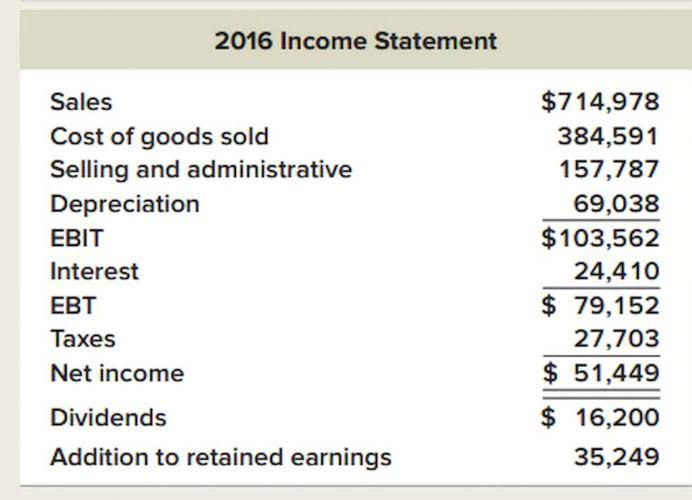Which accounts are debited in the closing entries?

In addition, if the accounting system uses subledgers, it must close out each subledger for the month prior to closing the general ledger for the entire company. In addition, if the company uses several sets of books for its subsidiaries, the results of each subsidiary must first be transferred to the books of the parent company and all intercompany transactions eliminated. If the subsidiaries also use their own subledgers, then their subledgers must be closed out before the results of the subsidiaries can be transferred to the books of the parent company. All of these entries have emptied the revenue, expense, and income summary accounts, and shifted the net profit for the period to the retained earnings account.
- Now that all the temporary accounts are closed, the income summary account should have a balance equal to the net income shown on Paul’s income statement.
- For the past 52 years, Harold Averkamp (CPA, MBA) has worked as an accounting supervisor, manager, consultant, university instructor, and innovator in teaching accounting online.
- If a temporary account has a debit balance it is credited to bring it to zero, and the retained earnings account is credited to balance the closing entry.
- He has been the CFO or controller of both small and medium sized companies and has run small businesses of his own.
- All expense accounts are then closed to the income summary account by crediting the expense accounts and debiting income summary.
- He has worked as an accountant and consultant for more than 25 years and has built financial models for all types of industries.
Rent Expense
An accounting year-end which is not the calendar year end is sometimes referred to as a fiscal year end. My Accounting Course is a world-class educational resource developed by experts to simplify accounting, finance, & investment analysis topics, so students and professionals can learn and propel their careers. Shaun Conrad is a Certified Public Accountant and CPA exam expert with a passion for teaching. After almost a decade of experience in public accounting, he created MyAccountingCourse.com to help people learn accounting & finance, pass the CPA exam, and start their career. Double Accounting Security Entry Bookkeeping is here to provide you with free online information to help you learn and understand bookkeeping and introductory accounting.
What is the Closing Procedure in Accounting?
- It is permanent because it is not closed at the end of each accounting period.
- For the past 52 years, Harold Averkamp (CPA, MBA) hasworked as an accounting supervisor, manager, consultant, university instructor, and innovator in teaching accounting online.
- In other words, revenue, expense, and withdrawal accounts always have a zero balance at the start of the year because they are always closed at the end of the previous year.
- Welcome to AccountingJournalEntries.com, your ultimate resource for mastering journal entries in accounting.
- The retained earnings account balance has now increased to 8,000, and forms part of the trial balance after the closing journal entries have been made.
- Having just described the basic closing entries, we must also point out that a practicing accountant rarely uses any of them, since these steps are handled automatically by any accounting software that a company uses.
Closing entries, also called closing journal entries, are entries made at the end of an accounting period to zero out all temporary accounts and transfer their balances to permanent accounts. In other words, the temporary accounts are closed or reset at the end of the year. Closing entries are journal entries used to empty temporary accounts at the end of a reporting period and transfer their balances into permanent accounts. Temporary accounts are used to accumulate income statement activity contribution margin during a reporting period.
Journal Entry:
If a temporary account has a debit balance it is credited to bring it to zero, and the retained earnings account is credited to balance the closing entry. Likewise, if a temporary account has a credit balance, it is debited to bring it to zero and the retained earnings account is credited. The closing entries are dated in the journal as of the last day of the accounting period. Closing journal entries are used at the end of the accounting cycle to close the temporary accounts for the accounting period, and transfer the balances to the retained earnings account. Now that all the temporary accounts are closed, the income summary account should have a balance equal to the net income shown on Paul’s income statement. Now Paul must close the income summary account to retained earnings in the next step of the closing entries.

Example 3: Closing the Income Summary Account

After the closing journal entry, the balance on the dividend account is zero, and the retained earnings account has been reduced by 200. If the year end is 31 December 2021 then the balance sheet, which is drawn up at a point in time, will be headed ‘Balance Sheet at 31 which of the following accounts will be debited in the closing entry at the end of the year? December 2021’, and the income statement, which is for an accounting period will be headed ‘Income Statement for the year ended 31 December 2021’. Remember that all revenue, sales, income, and gain accounts are closed in this entry. In order to produce more timely information some businesses issue financial statements for periods shorter than a full fiscal or calendar year. Such periods are referred to as interim periods and the accounts produced as interim financial statements. Temporary accounts can either be closed directly to the retained earnings account or to an intermediate account called the income summary account.
AccountingTools
![]()
All temporary accounts eventually get closed to retained earnings and are presented on the balance sheet. Temporary accounts are income statement accounts that are used to track accounting activity during an accounting period. For example, the revenues account records the amount of revenues earned during an accounting period—not during the life of the company. Closing entries occur at the end of an accounting year to transfer the balances in the temporary accounts to a permanent or real account.


